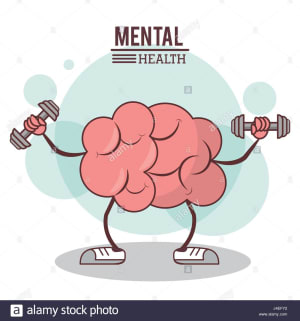
The science behind the physical benefits of exercise has long been established. However, we are now starting to better understand the psychological and emotional benefits too. This is particularly relevant in the current Covid-19 environment as many people struggle to deal with big changes to their daily lives and may feel overwhelmed with fear and uncertainty. The good news is that exercise can help, both now and further down the track.
"People who are fit in their 40s seem to retain more brain volume two decades later and also perform better in decision-making tests, new research suggests."
There are now numerous studies outlining the benefits of exercise and how it is used for the treatment of conditions such as schizophrenia, anxiety and depression as well as the prevention of age related conditions such as memory loss and Alzheimer’s.
Exercise has been proven to improve mood and emotion. When we exercise we produce hormones called endorphins which minimise pain and produce feelings of pleasure. Other hormones such as “brain derived neurotrophic factor” act as a reset switch in your mind. These hormones work to protect and clear your mind and help you make effective decisions. These hormones are the reasons why exercise can help you feel good! The effects can last for up to 12 hours and not only assist in resetting the mind but also help make better diet choices, increase metabolism, increase energy and arouse a heightened sense of accomplishment.
While quantifying the effects of exercise on the mind is a little more difficult to quantify than physical benefits, what is known is that exercise does have a positive effect on mood and the feeling of well-being. The evidence suggests that the greater the intensity the more benefit there is on mood. This is true for both aerobic and resistance training. For example, exercising on a treadmill or stationary bike at a moderate intensity for three to five times a week for 12 weeks can significantly reduce depressive symptoms, whereas the same exercises for the same frequency at low intensity yielded no significant reduction (Dunn et al., 2005).
In other studies participants who completed 150 to 200 minutes of walking found to improve physical wellbeing but also felt better emotionally, were more socially connected and were also aided against depressive symptoms (Heesch et al., 2015). It has also been shown that for sedentary individuals exercise can have similar effects to antidepressants for those diagnosed with mild depression (Bluementhal, J.A. et al 1999; 2007). However, exercise cannot be used as a stand-alone treatment method for depression. So whether you’re walking down the beach, pounding the pavement, doing laps of a pool or hitting the gym, those who partake in moderate intensity exercise most days of the week, generally feel better and show significantly less depressive symptoms.
We are yet to accurately identify whether certain types of exercise work best for mental health, or how much (time/frequency) is needed to bring about different effects. If you’re starting out and want to improve your mood, a thirty minute brisk walk, a few times a week is a good general starting point. From there, Great Shape can help you take your health and fitness further with a range of small group fitness and one on one personal training options available (including online programs during covid19). If you need help in getting started with an exercise program please click Request More Information now.
Blumenthal. J.A., Babyak, M.A., Craighead, W. E., Herman S., Parinda Khatri, P… Krishnan, K.R. (1999).Effects of exercise training on older patients with major depression. Archives of Internal Medicine, 159(19), 2349-2356.
Blumenthal.J.A., Babyak, M.A., Doraiswamy, P.M., Watkins, L., Hoffman, B. M., Barbour, K.A… Sherwood, A. (2007). Exercise and pharmacotherapy in the treatment of major depressive disorder. Psychosomatic Medicine, 69(7), 587-596.
Dunn, A.L., Trivedi, M.H., Kampert , J.B., Clark, C.G., and Chambliss, H.O. (2005). Exercise treatment for depression: Efficacy and dose response. American Journal of Preventative Medicine, 28(1) 1-8.
Heesch, K.C., Van Gellecum, Y.R., Burton, N.W., Van Uffelen, J.G., Brown, W.J. (2015) Physical Activity, Walking, and Quality of Life in Women with Depressive Symptoms. American Journal of Preventative Medicine, 48(3), 281-289.



